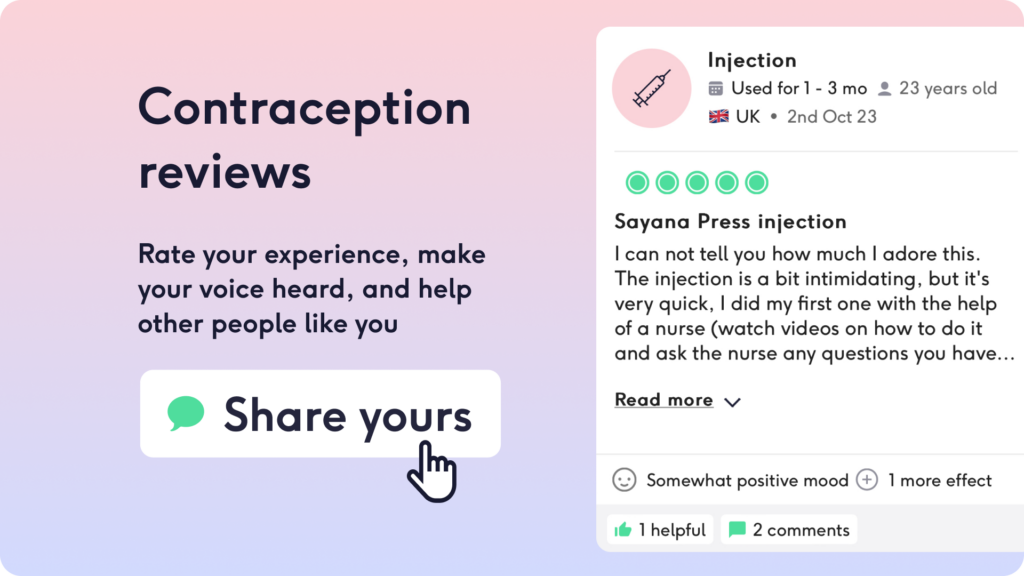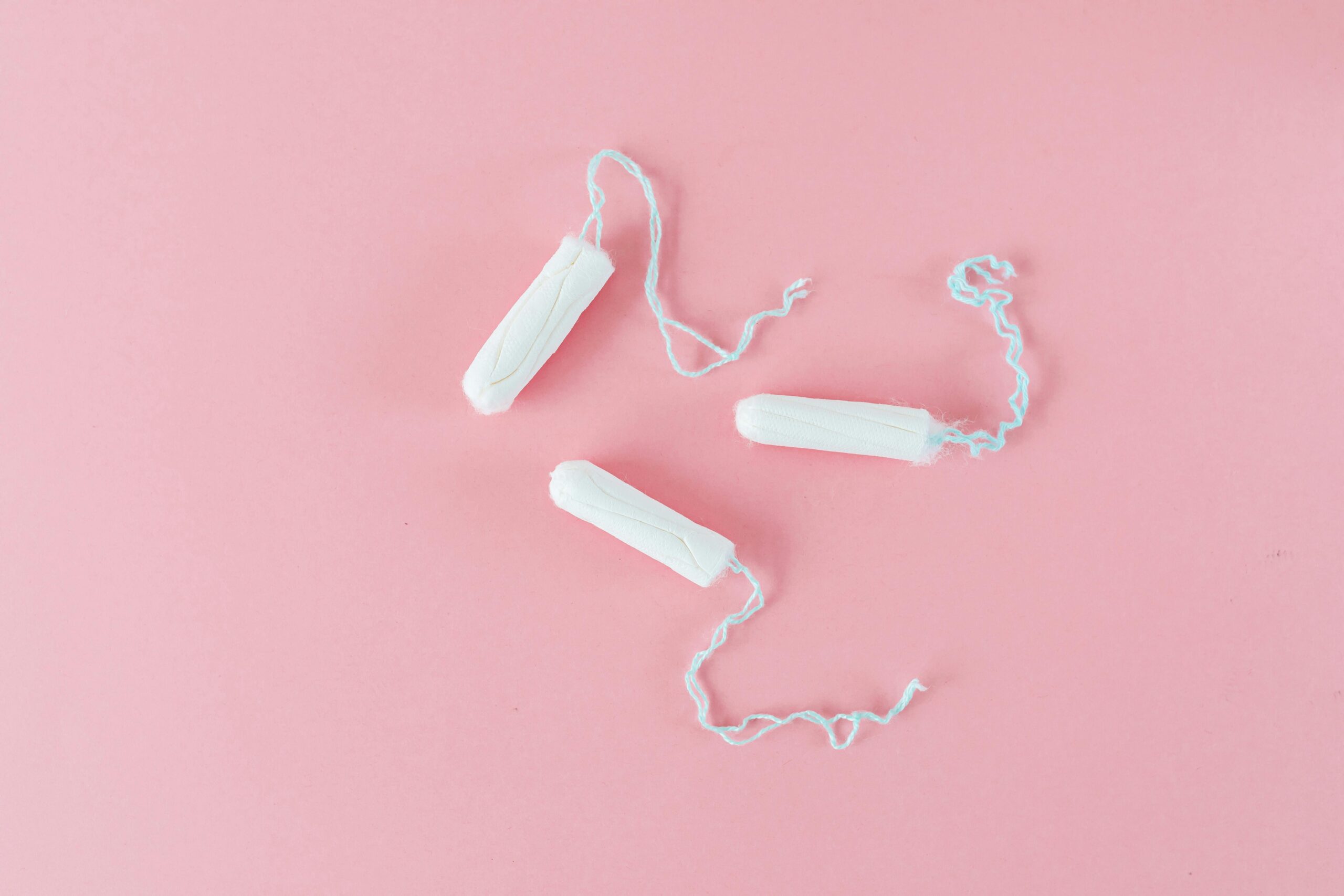
Spotting on birth control – what does it mean?

This guide has been peer reviewed by the medical team at The Lowdown and the FSRH and is regularly reviewed as per both clinical content policies
Spotting and irregular bleeding on contraception is a common experience – so firstly, don’t worry!
In this post we share all on what spotting and irregular bleeding is, what to look out for and when to see your doctor.
What is spotting?
Spotting describes episodes of light bleeding (including light brown discharge) which you may experience between your regular menstrual periods. Doctors may refer to this as intermenstrual bleeding or as breakthrough bleeding if you are using contraception.We need to be aware of our bodies and pay close attention to any changes in normal bleeding patterns from month to month. Spotting can be normal when using contraception and certain factors, for example smoking, increase the risk of experiencing breakthrough bleeding. However there are some instances where you should get it checked out by a doctor. Luckily for us, contraception can often help to control irregular bleeding and if you want to know which birth control methods are best to avoid spotting, when you should be concerned about spotting and when to see a doctor – then keep reading!
How long does spotting last on birth control?
Spotting on birth control, also known as breakthrough bleeding, typically occurs in the first six months of taking a new contraceptive. When starting a new method it can take time to regulate the menstrual cycle as the body needs to adjust to the new hormones. This can cause you to experience some spotting or bleeding between periods. With most methods this settles down after a few months but may persist for some contraception users.
What can cause spotting on birth control?
Progestogen in hormonal contraception leads to changes in the lining of the womb, called the endometrium. Progestogen may thin the endometrial lining, which can cause some bleeding. A thinner lining helps prevent pregnancy as a fertilised egg cannot implant into the womb lining. Other potential causes of spotting while on the pill are:
- Forgetting to take a pill for a day or more
- Infection – sexually transmitted infections can lead to irritation and inflammation of the uterus or cervix which may cause bleeding
- Taking a new medication – some drugs can interfere with the effectiveness of birth control pills. You should always check with your doctor before taking a new medication
- Vomiting or diarrhoea
- Pregnancy – spotting while on birth control doesn’t always mean you’re pregnant, however pregnant women can experience implantation bleeding or spotting as a result of the implantation of a fertilised egg in the lining of the uterus.
What types of birth control are most likely to cause spotting?
Bleeding patterns have been researched (which is unusual for contraception side effects!) and expected patterns for different hormonal options have been summarised by the Faculty of Sexual and Reproductive Health (FSRH) which we delve into below.¹ It’s also worth checking out our user reviews and seeing how our Lowdown reviewers reported changes to their periods with different contraceptive methods.Hormonal methods containing only progestogen are the most likely to cause spotting. These include:
- The contraceptive implant
The implant can cause long bleeding episodes (over 14 days) in 20% of women and frequent bleeding aka spotting in around 10% of women. The bleeding pattern you have in the first 3 months of use, is generally a good predictor of what will happen for the duration of use.
- The progestogen only pill (mini pills like Hana, Lovima, Desogestrel.)
Desogestrel based mini pills have similar spotting rates to the implant and stop periods altogether in up to 30% of users.² However, the traditional mini pills which include Norgeston, Noriday and Micronor change bleeding patterns in around one third of users and are more likely to cause frequent or irregular bleeding than to stop periods altogether.
- The contraceptive injection (such as Sayana Press)
Bleeding disturbances including spotting, prolonged (over 14 days) or heavy bleeding are common initially, but after 12 months of use half of users won’t have any bleeding at all!
- The hormonal coil
With all types of hormonal coil, spotting is common in the first 3 to 6 months after insertion. However, after this the Mirena, Levosert or Benilexa coil can reduce blood loss by a huge 90% and around 40% of users will have no periods in the longterm.¹ ³ Lower dose hormonal coils including the Jaydess may not control bleeding or spotting as successfully, but 13% of users can still look forward to no periods.The copper coil does not contain hormones but may cause spotting especially in the first few months after fitting. Combined hormonal contraception containing oestrogen and progestogen (the combined pill, patch or ring) may cause spotting in the first 3 months of use in 20% of women. However, this often settles and users will then normally only experience bleeding when they choose to have a break of up to 7 days between packs. This is known as a ‘withdrawal bleed’.

When should you be concerned about spotting?
Spotting is normal when starting or changing contraception, however if it is still occurring after six months, or is new after you’ve been on your contraception with a stable bleeding pattern for a while, then this could mean an underlying issue. These could include:
- STI’s, such as chlamydia and gonorrhea
- Pelvic inflammatory disease (PID)
- Cervical ectropion (a fragile area on the cervix which bleeds easily and is often made worsen by contraceptive pill)
- Changes to the cervix which might eventually lead to cancer
- Injury to the vagina, for example with sex
- Vaginal dryness which might be due to hormonal changes
- Pregnancy or pregnancy loss
How to stop spotting on birth control
Top tips to help reduce your irregular bleeding!
- Ensure you’re taking the pill at a similar time every day to help maintain consistent hormone levels in your body. Using apps and trying to get into a routine can help this.
- Continue to take your contraceptive pill regularly even if spotting does occur. If you’ve been taking the pill for less than six months, your body may not have had enough time to adjust fully
- Check any other medications to ensure that they do not interfere with the effectiveness of the pill
- If spotting is related to the implant and is problematic after 3 to 6 months then it is worth talking to your GP, practice nurse or local contraception clinic about adding in other medication to help
- If you think vomiting or diarrhoea may be affecting your ability to absorb the pill, speak to your doctor about this
There are also certain treatment or medications that may help with bleeding, such as adding in extra hormones or changing how you use your contraceptive. These are best discussed with you healthcare professional.
How to manage spotting
Deciding whether or not you should use a tampon or pad depends on how light or heavy the bleeding is and which you prefer to use. Alternatively, investing in some period pants (Modibodi or WUKA) could help you feel more secure throughout the day knowing that if you do spot it won’t be visible. With any spotting it is worth getting a self taken sexual health screen which you can access via your GP, sexual health clinic or online. This checks for chlamydia and gonorrhea which are common causes of spotting in younger women. Also, make sure you have had your cervical cancer screening if you are over 25.
When to see a doctor…
Like any medication, some people can use their contraception with no complications, however others may experience problems. You should speak to your doctor if any of the following occur:
- Persistent bleeding on a contraceptive method after 6 months of use
- New bleeding or spotting or a change in bleeding pattern after you’ve been on your contraception for a while
- Bleeding regularly after sex
- Blood and discharge especially if there is an offensive smell
- Spotting after a new change in sexual partner as this could suggest a sexually transmitted infection
- Heavy bleeding (soaking a pad or tampon hourly for more than two hours)
- If you have other symptoms or are worried!
If you are still spotting after taking the pill or starting a new method of contraception for six months, speak to your doctor or nurse. They may suggest changing to another form of contraception, for example switching to a pill with a higher dose of oestrogen or one with a different progestogen formulation.
This blog can help you learn more about various contraception options, but it does not give medical advice. You should always speak to a nurse or doctor when making choices about contraception and before starting a new method.
Our medical review process
This article has been medically reviewed for factual and up to date information by a Lowdown doctor.






